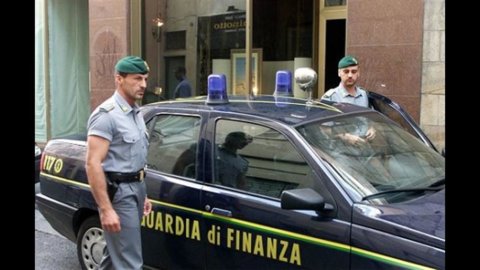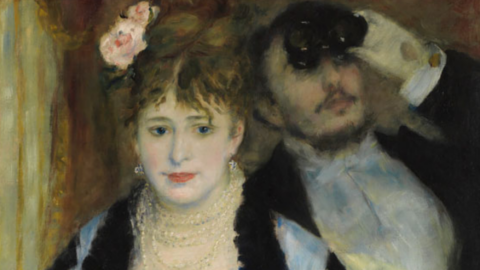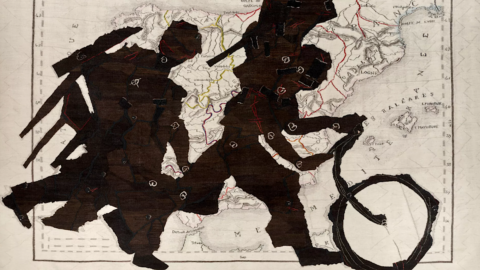Here masses are celebrated, music is listened to, the Popes are welcomed and conferences are held on hot and current topics. The last one, on 10 July, was entitled “Biffi and migrants. From 2000 to 2018”, in memory of the Cardinal who died three years ago and pitted Archbishop Matteo Zuppi and the undersecretary of state for tourism Lucia Borgonzoni, from the League.
It is San Petronio, the largest brick Gothic church in the world, the fourth in size in Italy, the sixth in Europe, the most important in the capital of Emilia. And yet, despite its numbers, the centrality of its position and the place it occupies in the heart of the Bolognese, it has the title of "minor basilica", because the episcopal church is the metropolitan cathedral of San Pietro.
Precisely this "minority", however, reveals that San Petronio is not a church of the Church, it is not the symbol of the pontifical power that has dominated the city for centuries. Instead, it is an expression of popular feeling, it is the temple that the Bolognese wanted for themselves and for their patron, so little known outside the walls of the historic centre.
The building flanks the Palazzo dei Notai, faces Palazzo d'Accursio (town hall), faces Palazzo del Podestà and keeps an eye on Palazzo Re Enzo, where the unfortunate nephew of Federico Barbarossa lived and died as a prisoner. It occupies the place of honor in Piazza Maggiore, which is the "Piazza Grande" celebrated by Lucio Dalla who lived a few steps away from these places. It is the grandiose synthesis of the civil and religious conscience of the city. The symbol of his aspirations and limits.
The biography of Petronius bears witness to this, as reconstructed in the "legendary" version of the Benedictine monks at the end of the 1100s. Petronius was bishop of Bologna between 431 and 450 and it is said that he found it in disastrous conditions due to the barbarian invasions and thus launching a reconstruction campaign starting from the Santo Stefano complex. From the Roman emperor Theodosius II he would have obtained many benefits: the expansion of the wall circuit, the guarantee of perpetual civic autonomy, the imperial protection against any form of foreign tyranny, the concession of the Studium, or the University. A political reading of the Saint which becomes his fingerprint and which is imprinted on the identity card of the city itself.
It was in 1253, in the golden century of Bologna, in the era of the republic of Notaries, when the slaves were freed and the brilliant Rolandino de' Passeggeri dominated the scene, that the free Commune decided to raise Petronius to the dignity of principal patron, in place of St. Peter, who embodies the temporal power of the popes. A century later it was the Council of 600 of the Municipality, a sort of city political assembly, which decided to dedicate a votive and civic temple to the chosen patron. The foundation stone was laid in 1390, the original project by Antonio di Vincenzo is pharaonic and provides for 183 meters in length and 137 meters for the transept. That project, in its entirety, was never completed, for reasons of money and the development of the city, because the construction times for the ambitious monument were long and in the meantime the need for space for other buildings was growing. Unfortunately, the drawings and the 1/12 scale wooden model, approximately 15 meters long, also disappeared, destroyed in a fire. Although incomplete, over six centuries and more, San Petronio bears witness to a thousand deeds and misdeeds, the best known in the 500s, starting with the destruction in 1511, by the followers of the Bentivoglios, of the bronze statue of Pope Julius II, created by Michelangelo. Certainly one did not look at the value of the work, but at what it represented, namely papal dominion over a place that was a symbol of freedom and autonomy. In 1530 the basilica was chosen for the coronation of Charles V as emperor of the Holy Roman Empire. A few years later it hosted part of the work of the Council of Trent.
It maintained its independence from Rome until 1929, when it was transferred to the diocese and was consecrated in 1954, when the declaration of completion of the works also arrived. 564 years have passed since the ready-to-go, a time longer than even today's tenders. The measures are smaller than the initial project, but remain respectable: 132 meters long, 66 wide, 47 high. The remains of San Petronio, first guests of the basilica of Santo Stefano, have found peace there since the year 2000.
Among the many works of art it contains, we note the central portal, a masterpiece by Jacopo della Quercia started in 1425. Scenes from the Old Testament are depicted on the pillars, 18 prophets on the archivolt, stories from the New Testament on the architrave and on the tympanum the “Madonna with Child” and “Sant'Ambrogio and San Petronio”. The center of the tympanum arch is the work of Amico Aspertini.
Worth seeing is the largest sundial in the world, which measures 67 meters and has crossed the floor of the church since 1657. It was built by Domenico Cassini, a professor of astronomy, convinced that the motion of the planets depended on that of the Sun. In the end, Cassini proved successful: not only did he manage to demonstrate that the Sun has two types of motion, one real and one apparent, but his sundial, equal to six hundred thousandth part of the terrestrial meridian, established itself as a precision instrument. An instrument that still today allows solar midday to be recognized throughout the year, in any season.
Finally, we recall the fresco depicting Mohammed and which makes San Petronio one of the places at risk of attackers, even if, as the primicerio of the basilica, Don Oreste Leonardi, explained years ago in Avvenire, the depiction should not be offensive. "The reference to Mohammed is an indication of the fact that he would have broken the unity of the Church (since in the Middle Ages Islam was thought of as a Christian schism), and now it is his own person who is being torn apart in his integrity" . A representation which, according to the primicerio, is consistent with the era in which it was painted and with the verses of the Divine Comedy, from which the fresco draws its inspiration. "It is the tragic representation of a humanity destined to be lost if it does not recover the true meaning of its life".





